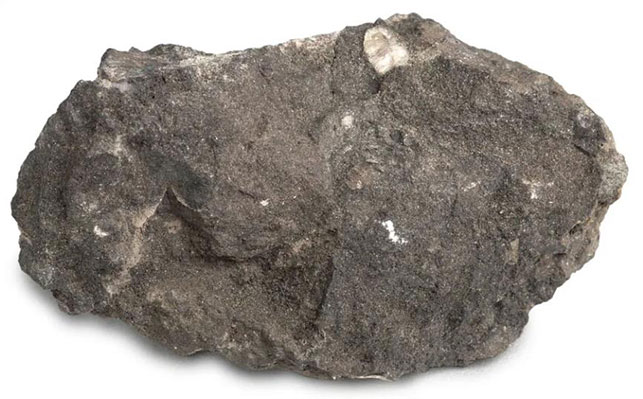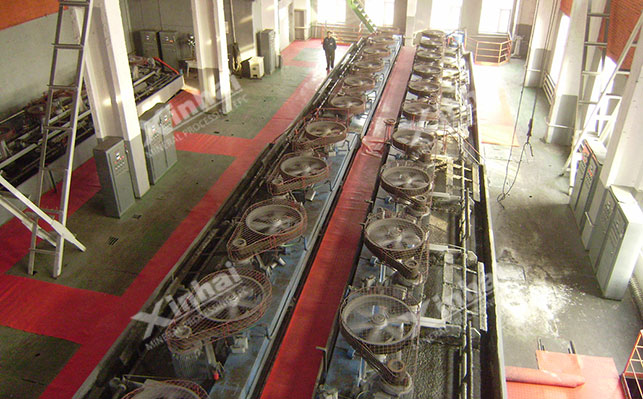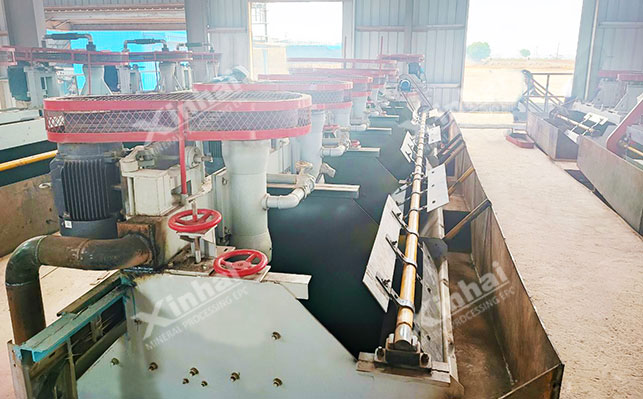
15311826613
Click to add WeChatPhosphate rock is an important mineral raw material for fertilizer and chemical industries, and is a national strategic mineral resource. Carbonate phosphate rock is a common mineral resource for obtaining phosphorus, but the content of MgO, CaO and CO2 in this type of mineral is generally high. If you want to obtain a more ideal qualified phosphate concentrate for acid and fertilizer production, you need to remove carbonate. The commonly used method for removing carbonate from phosphate rock is reverse flotation. Below we take a carbonate phosphate rock as an example to introduce its mineral processing method.
This phosphate rock belongs to sedimentary phosphorite. The structure of the ore is mainly phosphorus sand structure, colloidal structure and fine-crystal to microcrystalline structure composed of dolomite; banded and blocky structure. The phosphorus-containing minerals in phosphorite are mainly mud-crystal apatite (collophane), and the gangue minerals are mainly microcrystalline dolomite and mud-crystal calcite, with a small amount of quartz, clay minerals, and trace amounts of carbonaceous materials and iron oxides.

Mud-crystal apatite: It is dark gray under a single polarizer and weakly heterogeneous under orthogonal polarization. It is usually an aphanitic aggregate. The aggregate particles composed of mud-crystal apatite are mainly sub-angular sand fragments, followed by phosphorus oolitic particles, phosphorus aggregates, phosphorus aggregates, phosphorus bioclasts, etc. The particle size of phosphorus sand fragments is generally 0.1-0.2mm. The diameter of phosphorus oolitic grains is 0.2-0.6mm, and that of phosphorus agglomerates is 1-2mm. Micritic apatite is also associated with trace amounts of impurities such as clay minerals, micritic carbonate minerals, iron oxides, and carbonaceous materials.
Dolomite: It is a fine-grained to microcrystalline aggregate under the microscope, distributed in the pores of phosphorus sand fragments and phosphorus oolitic grains in the form of cement, or in the form of bands to form dolomite banded phosphorite.
Calcite: It is a fine-grained aggregate of mud crystals embedded in the pores of phosphorus sand fragments in the form of a filling matrix under the microscope. Quartz is dispersed in dolomite in the form of authigenic quartz or silt. Clay minerals are cryptocrystalline microparticle aggregates dispersed in dolomite, or mixed in the micritic phosphorite in the form of impurities.
The reverse flotation process is to float carbonate gangue minerals to reduce the magnesium content in phosphate concentrate, and the segmented dosing process can better remove carbonate minerals and obtain phosphate concentrate with lower magnesium content; the roughing tailings adopt a multi-stage scavenging process, which can effectively reduce the loss of phosphorus in the tailings to improve the recovery rate of phosphorus.

Through a large number of exploratory tests, a reverse flotation process flow of three-stage roughing dosing and three-stage scavenging was designed for the mine. Before flotation, the carbonate-containing phosphate ore is crushed to a grinding fineness of -0.071mm (-200 mesh) 66.4%. Phosphoric acid is then used as a depressant for reverse flotation to recover phosphorus. Finally, high-quality phosphate concentrate with a P2O5 grade of 32.91% and MgO of 0.92% is obtained. The P2O5 recovery rate is 92.88%, and the MgO removal rate is 83.33%.

The above is an introduction to the ore properties, flotation scheme and flotation process of a carbonate phosphate ore. In the actual ore dressing process, how to obtain an ideal phosphate concentrate, the choice of its process scheme is particularly important. Therefore, it is recommended to conduct ore dressing test analysis, analyze the ore properties and various aspects, and then design a suitable process scheme to obtain an ideal phosphate concentrate.
Article content excerpted from: Research on reverse flotation process of carbonate phosphate ore